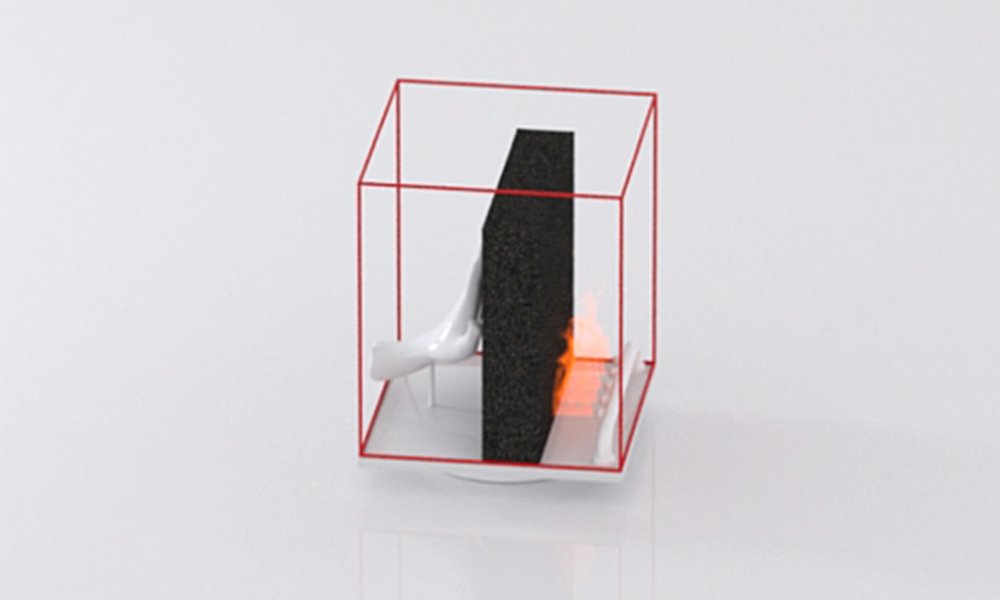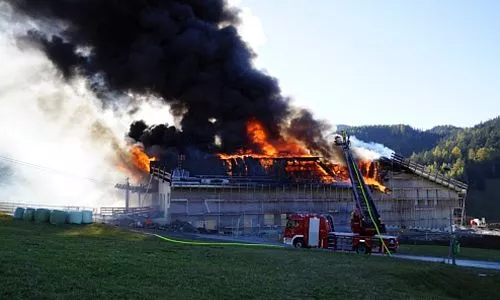Specifying FOAMGLAS® insulation for fire safety

In Europe there are more than two million fires in buildings and industrial installations every year, and they are responsible for more than four thousand deaths and billions of Euros of damage.
The correct specification and installation of building products and materials - including insulation - is critical to achieve fire safety and minimise the development and spread of fire. In industrial applications, for example, the use of insulation materials that can soak up flammable liquids should be avoided.
Smoke toxicity in fires
Smoke and toxic gases are a product of all fires, presenting a danger to building occupants and firefighters. Building products and materials contribute to smoke production in different ways. Smoke toxicity is not currently regulated in Europe, but discussions continue with a view to developing a framework. Research is ongoing to better understand the contribution to smoke production made by construction products, alongside building contents.
The financial cost of fire
The annual cost of fire throughout Europe is around 126 billion Euros. More than 70% of businesses that are affected by fire go bankrupt within three years of the incident. Fire destroys important architectural and historical buildings, a loss to society and culture that cannot be quantified.
What is the fire performance of FOAMGLAS® insulation?
Insulation materials can offer more than thermal performance. Among their other characteristics is the role they can play in fire safety.
In particular, non-combustible insulation gives peace of mind for specifiers and building owners alike. FOAMGLAS® cellular glass insulation does not burn and does not contribute to fire spread. It does not release smoke or toxic gases, nor produce flaming droplets which can cause injury and contribute to fire development.
The melting point of FOAMGLAS® insulation is in excess of 1,000°C (for thicknesses of 80mm and above, when tested to DIN 4102-17), and a large part of its core mass remains after 90 minutes. When FOAMGLAS® is exposed to fire, vitrification of the surface takes place and effectively forms a hard ‘protective layer’.
The structure of FOAMGLAS® means it absorbs no liquid, and can be used in a diverse range of industrial applications, including jet fire protection, hydrocarbon fire protection and fire wall penetrations.
Preventing fire spread with FOAMGLAS® insulation
When tested to EN 13501-1, FOAMGLAS® insulation achieves Euroclass A1. This is the highest classification available and shows the material is non-combustible. It does not burn, distort, produce flaming droplets, or contribute to smoke production and toxicity. It can help to meet requirements for internal fire spread and compartmentation as part of appropriately-designed building elements.
For critical processing and safety equipment in industrial applications, FOAMGLAS® insulation keeps equipment functioning, allowing a safe and controlled plant shut down and keeping personnel safe.
FOAMGLAS® insulation and fire safety
-
A1 classification
When tested to EN 13501-1, FOAMGLAS® insulation achieves Euroclass A1. This is the highest classification available and shows the material is non-combustible. -
Fire Safe Europe (FSEU)
FOAMGLAS® is an active member of FSEU, working to raise awareness about the importance of fire safety among European policymakers.







